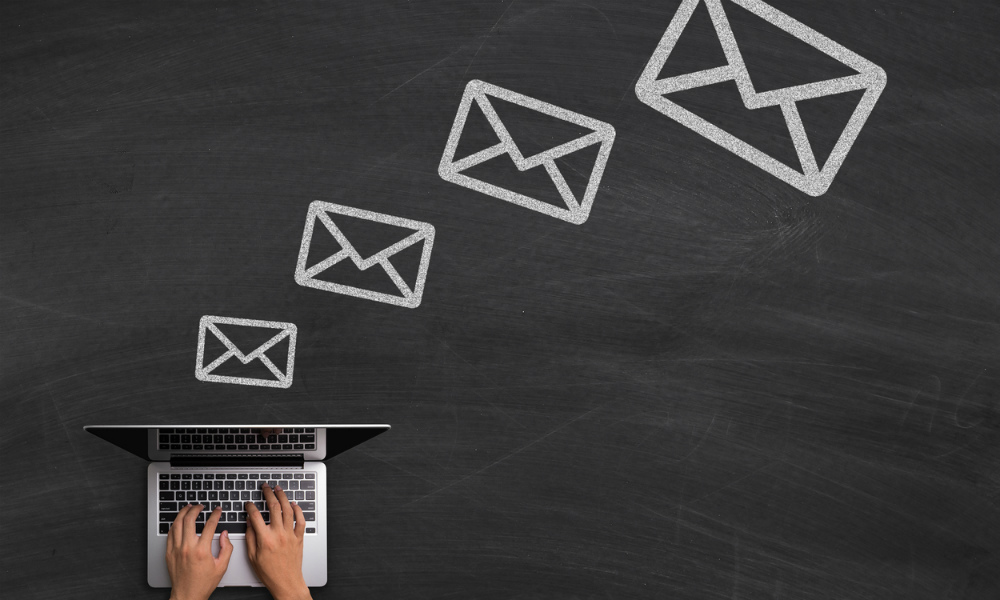As email marketing approaches its 40th birthday, here’s what marketers can learn about making email communications more relevant and effective.
The first marketing email was sent nearly 40 years ago by a marketer named Gary Thuerk from Digital Equipment Corporation. Thuerk sent an email promoting his company to roughly 400 people with an ARPANET address. While this first marketing email generated a huge spike in sales, it also led to what later became known as spam — unsolicited, unwanted messages sent en masse.
Today, there is a major distinction between deliberate, carefully crafted communications from a brand and haphazardly sent spam emails. This distinction is the result of saturation. As most brands have adopted email as a major communication hub, consumers have started to get hundreds of brand emails per day both from brands they’ve subscribed to and from those they’re never interacted with. This development has prompted marketers to become savvier in the way they use the email channel to communicate with consumers. As such, email has become a central “hub” for all things digital, making it more useful and important than ever. Just think: When was the last time you purchased something online (and even in-store!) without providing an email address?
As consumers do more online, they’re turning to brands to provide information. That’s one reason the number of new email subscribers (those who have subscribed within 90 days) is at an all-time high.
According to new research from Yes Lifecycle Marketing, as of the first quarter of 2017, new email subscribers make up 6 percent of a marketer’s database, registering a 30 percent increase over the last three years.
At the same time however, click-to-open (CTO) rates have been on a steady decline, indicating that while marketers are effectively enticing consumers to subscribe to and open their messages, they still struggle to drive engagement beyond the open.
Email marketing is certainly alive and well, but there’s work to be done. To make the most of consumers’ digital hub, smart marketers should consider these best practices:
Offer unique content.
Enticing subject lines are the foundation of effective email campaigns, but marketers need to do more to engage subscribers beyond the open. This means learning more about your audience, and offering them valuable, relevant information that meets their needs at the right time.
Email content shouldn’t always be promotion-heavy or discount-oriented. As long as information is relevant to a brand’s specific audience, marketers should get creative. For example, a brand that recently sold patio furniture to a subscriber online could follow up with emails with ideas for hosting summer parties or recipes for grilling out. But, unique content doesn’t always have to reflect a previous purchase. Loft, for example, sends monthly horoscopes to subscribers and makes clothing recommendations based on a consumer’s zodiac sign.
By delivering content that’s unique and keeps their brand top of mind, email marketers will leave their subscribers wanting more.
Look at the time.
There’s no magic day of the week or time of day to send emails, but analyzing the performance of past email campaigns can help indicate which days drive the best email marketing ROI. In the first quarter, the same Yes Lifecycle Marketing report revealed weekends proved the most effective. While emails sent on Fridays garnered the highest engagement, emails sent on Saturdays boasted the best conversion rates.
Along with timing, it’s also important to get the frequency of email campaigns right. Subscribers will likely opt out if a brand reaches out too little or too often. To best determine what their subscribers prefer, marketers should utilize preference centers that allow users to customize their mailing frequency.
Trigger engagement.
Another strategy marketers can use to improve engagement is triggered emails, which are informed by specific consumer actions or data. GrubHub, for instance, sends food delivery emails triggered by different weather conditions, such as snow or rain, at each subscriber’s location.
This past quarter, Yes Lifecycle Marketing found that triggered email campaigns generated almost five times the click rate, almost double the open rate and almost triple the CTO rate of business as usual campaigns. Despite their excellent performance, triggered emails made up less than 7 percent of total emails sent in Q1, indicating that marketers are not taking full advantage of the potential of triggered campaigns.
Because triggered messages are timely, relevant, informed and actionable, their use is appropriate for almost any type of email marketing program. With each trigger not implemented, marketers are missing a huge opportunity to drive engagement and conversions.
Make offers meaningful.
Consumers’ promotion tabs are full of emails advertising a dollar amount off, a percent off, free shipping or BOGO offers. In fact, we found offer emails make up roughly a third of all marketing emails. And while these messages drive conversions, emails that don’t contain offers generally perform better in terms of engagement.
Brands can improve their overall email program (and ultimately drive more conversions) by making each message more meaningful. By balancing offer emails with lifecycle messages and value-added communications, an offer is perceived as a treat that maximizes purchase opportunities.
Email marketing will soon be over the hill, but it’s certainly aging gracefully. As we blow out the candles on email marketing’s 40th birthday cake, marketers must ask themselves if they’re doing everything they can to maximize the channel’s timeless appeal.
